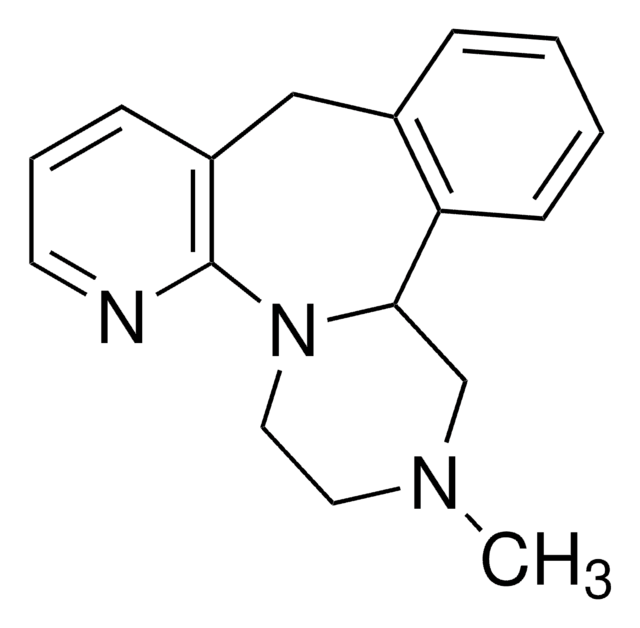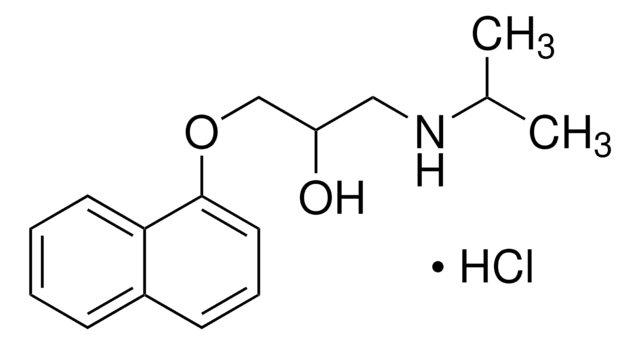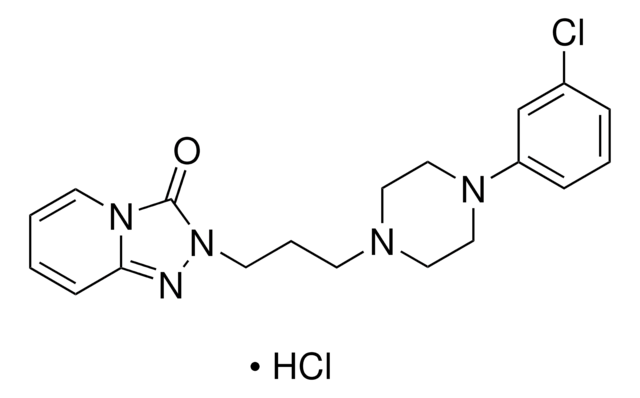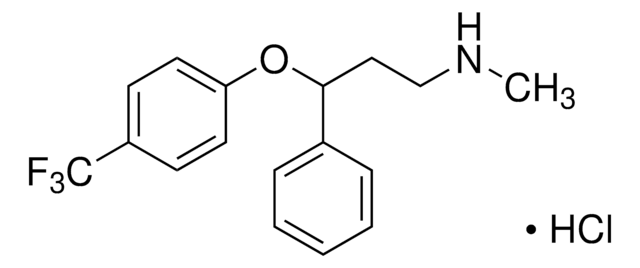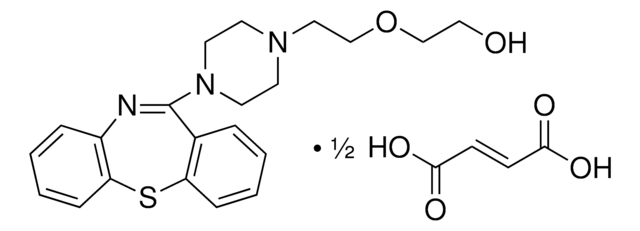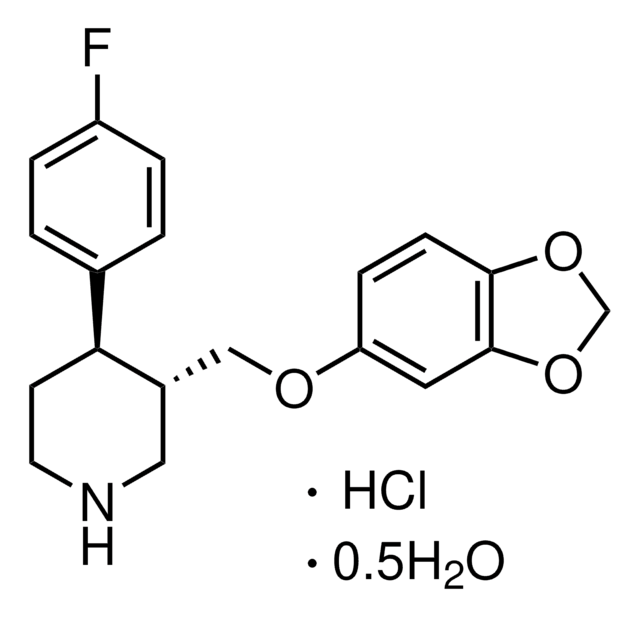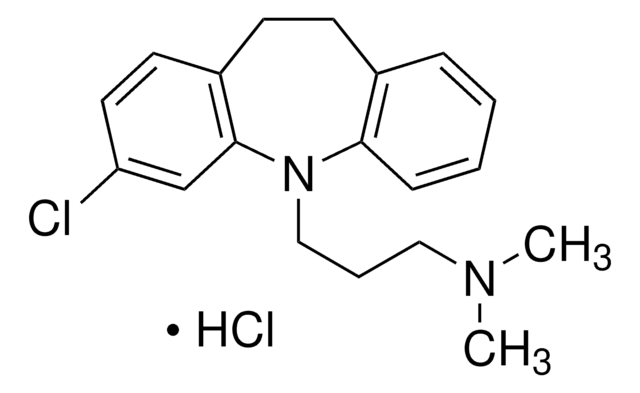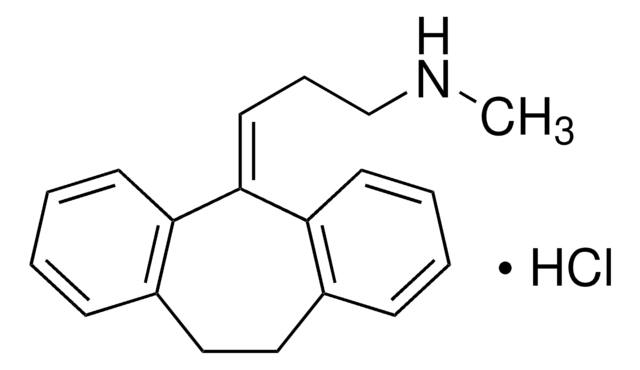M0443
Mirtazapine
≥98% (HPLC)
Synonyme(s) :
1,2,3,4,10,14b-Hexahydro-2-methylpyrazino[2,1-a]pyrido[2,3-c][2]benzazepine
About This Item
Produits recommandés
Essai
≥98% (HPLC)
Forme
powder
Couleur
white
Solubilité
DMSO: 8 mg/mL, clear
Chaîne SMILES
CN1CCN2C(C1)c3ccccc3Cc4cccnc24
InChI
1S/C17H19N3/c1-19-9-10-20-16(12-19)15-7-3-2-5-13(15)11-14-6-4-8-18-17(14)20/h2-8,16H,9-12H2,1H3
Clé InChI
RONZAEMNMFQXRA-UHFFFAOYSA-N
Informations sur le gène
human ... ADRA2A(150) , ADRA2B(151) , ADRA2C(152) , DRD2(1813) , DRD3(1814) , DRD4(1815) , HRH1(3269) , HTR1A(3350) , HTR2A(3356) , HTR2C(3358) , HTR7(3363)
mouse ... Slc6a2(20538)
rat ... Adra1a(29412) , Drd1a(24316) , Drd2(24318) , Htr1a(24473) , Htr2a(29595) , Htr2c(25187) , Slc6a3(24898) , Slc6a4(25553)
Vous recherchez des produits similaires ? Visite Guide de comparaison des produits
Actions biochimiques/physiologiques
Mention d'avertissement
Warning
Mentions de danger
Conseils de prudence
Classification des risques
Acute Tox. 4 Oral - STOT SE 3
Organes cibles
Central nervous system
Code de la classe de stockage
11 - Combustible Solids
Classe de danger pour l'eau (WGK)
WGK 3
Point d'éclair (°F)
Not applicable
Point d'éclair (°C)
Not applicable
Équipement de protection individuelle
Eyeshields, Gloves, type N95 (US)
Faites votre choix parmi les versions les plus récentes :
Déjà en possession de ce produit ?
Retrouvez la documentation relative aux produits que vous avez récemment achetés dans la Bibliothèque de documents.
Les clients ont également consulté
Notre équipe de scientifiques dispose d'une expérience dans tous les secteurs de la recherche, notamment en sciences de la vie, science des matériaux, synthèse chimique, chromatographie, analyse et dans de nombreux autres domaines..
Contacter notre Service technique
